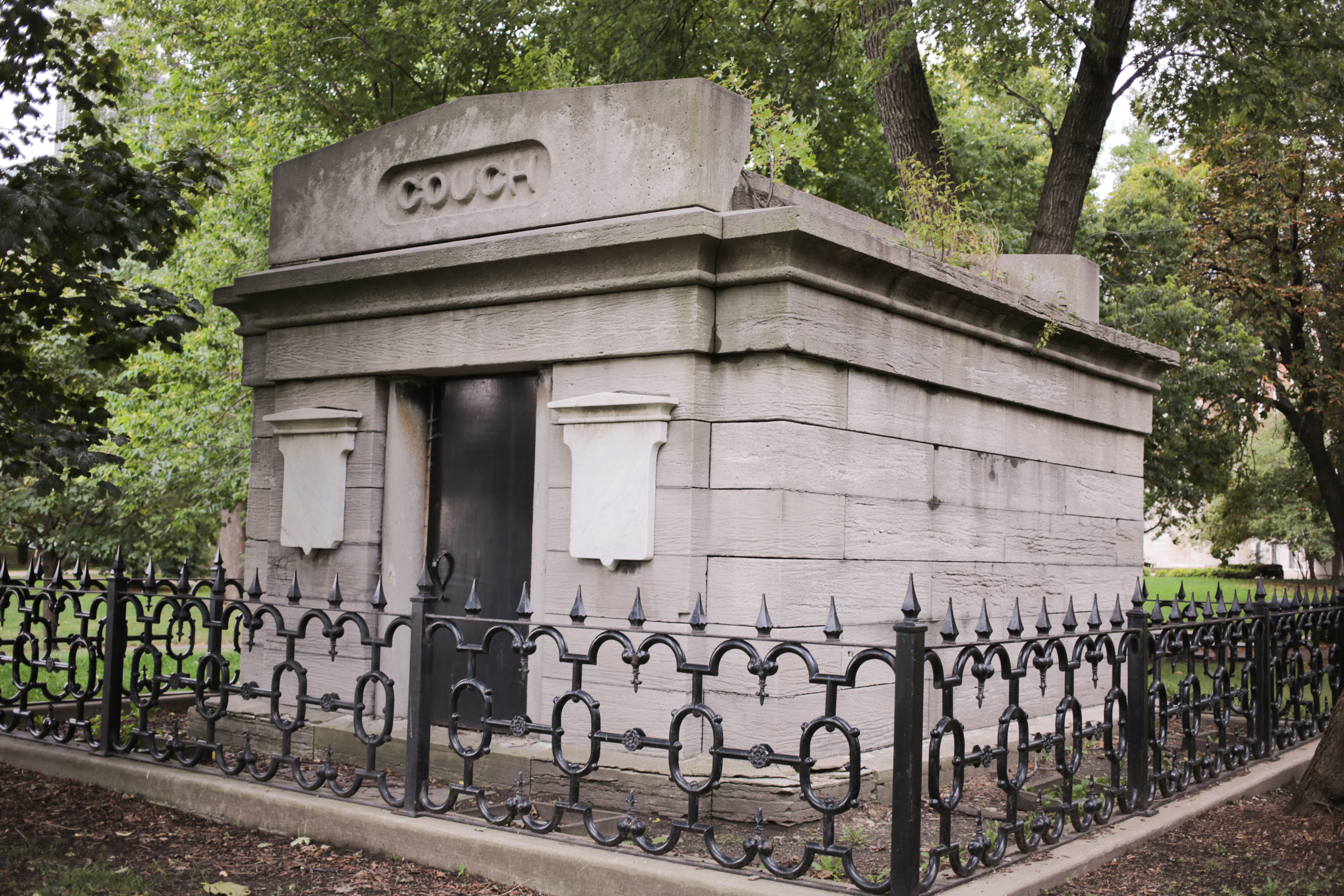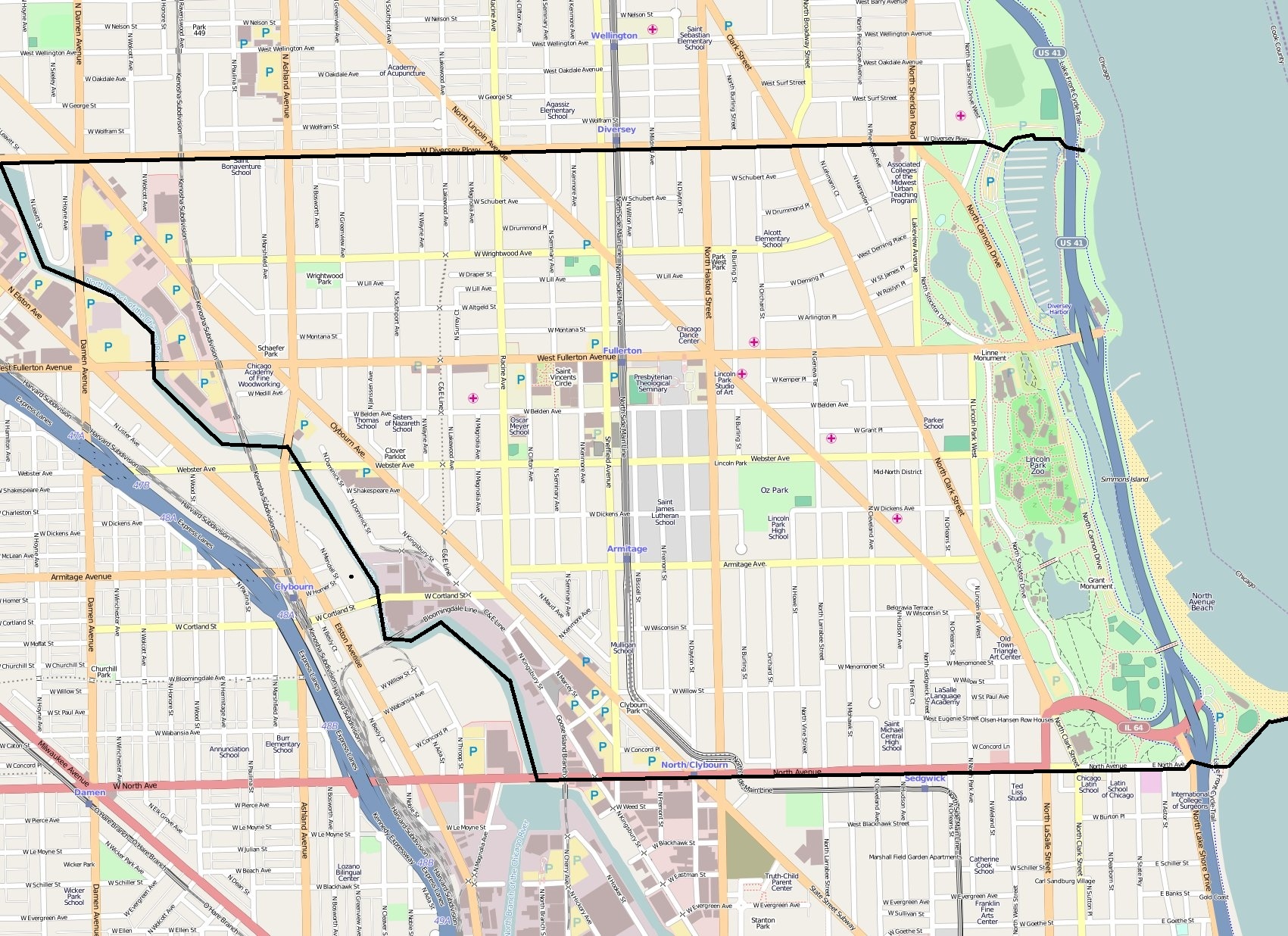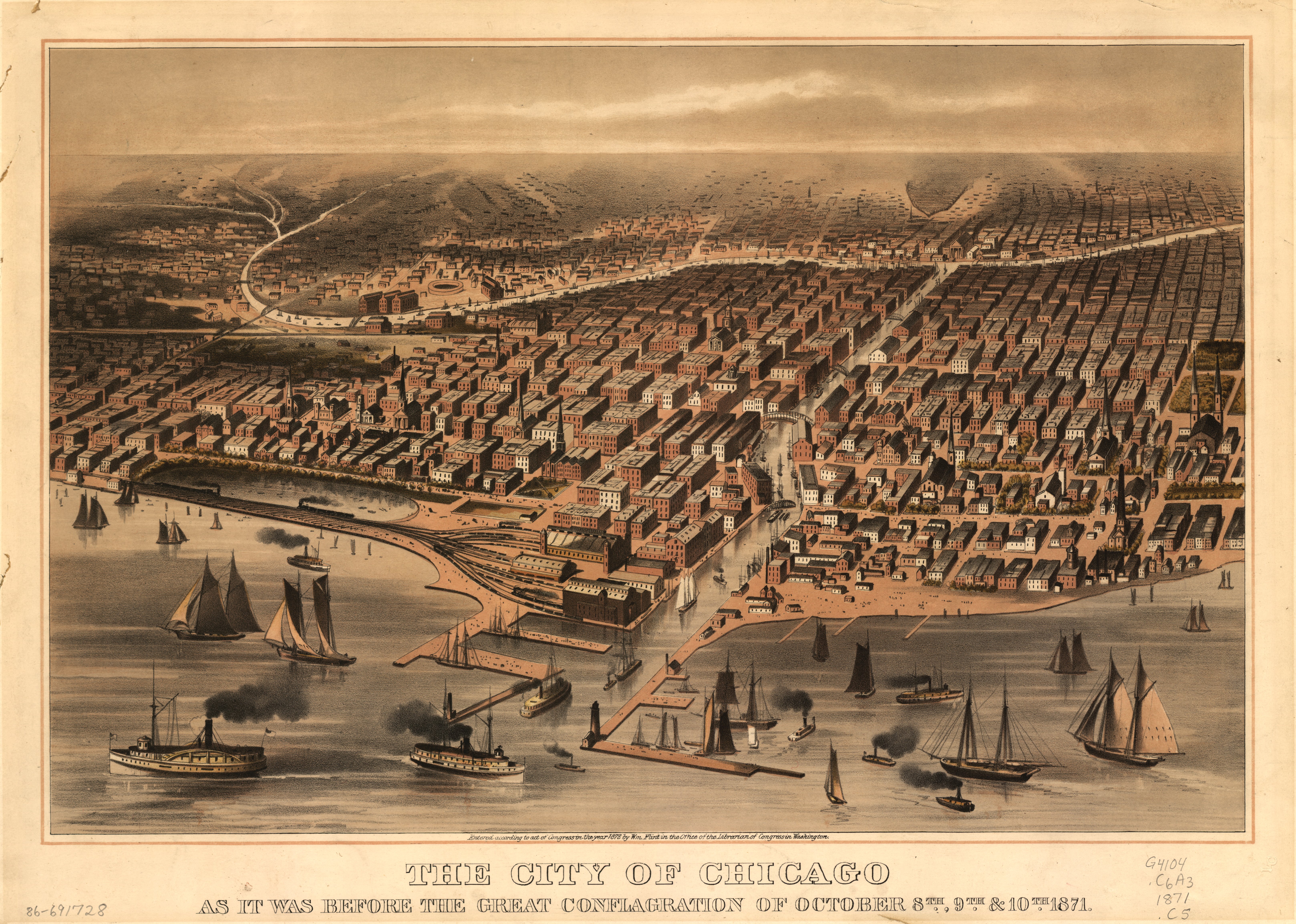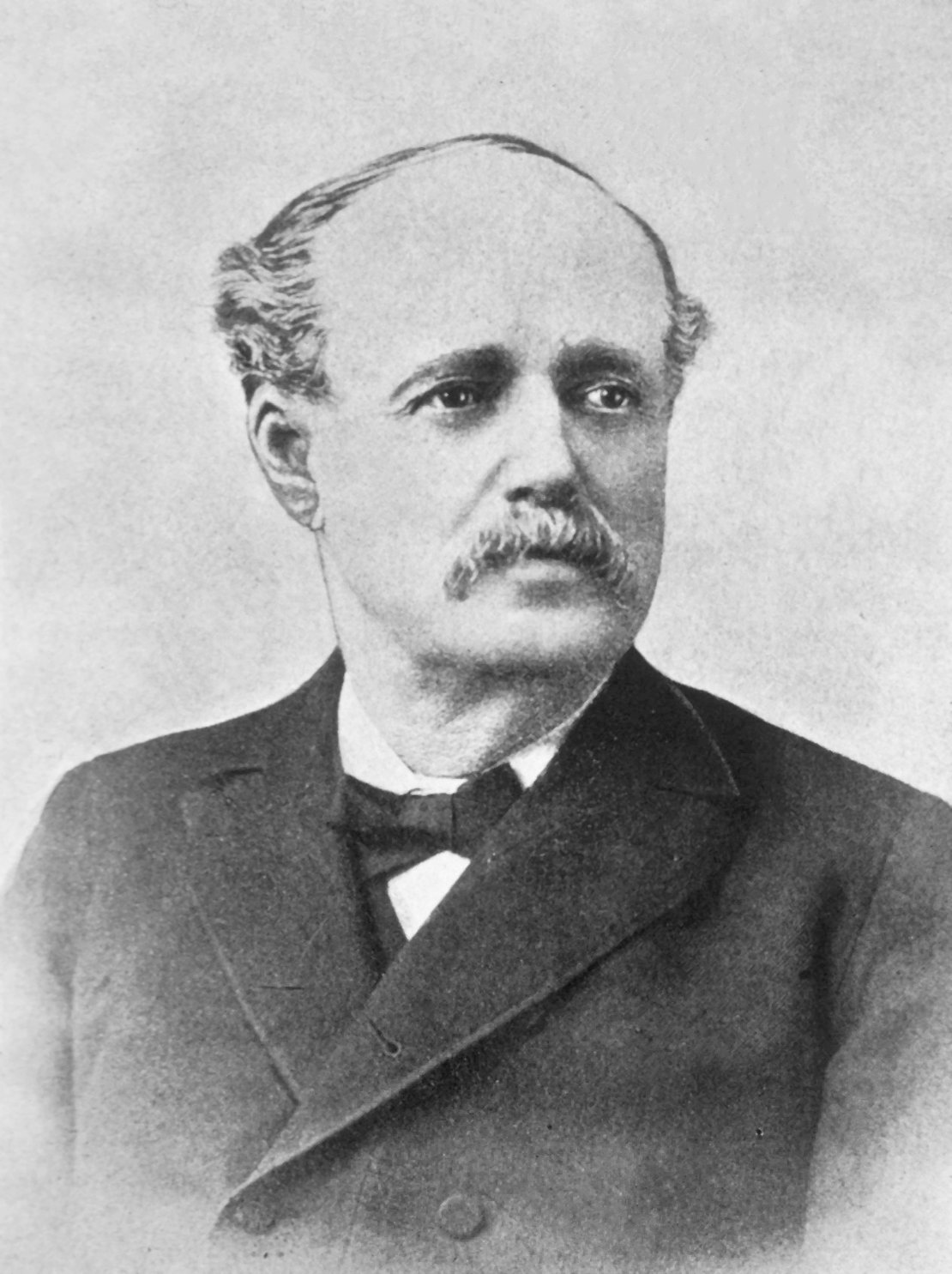|
Lincoln Park
Lincoln Park is a park along Lake Michigan on the North Side of Chicago, Illinois. Named after US President Abraham Lincoln, it is the city's largest public park and stretches for seven miles (11 km) from Grand Avenue (500 N), on the south, to near Ardmore Avenue (5800 N) on the north, just north of the Lake Shore Drive terminus at Hollywood Avenue. Several museums and a zoo are located between North Avenue (1600 N) and Diversey Parkway (2800 N) in the Lincoln Park, Chicago, eponymous neighborhood. Further to the north, the park is characterized by parkland, Chicago beaches#Lincoln Park Beaches, beaches, recreational areas, nature reserves, and harbors. To the south, there is a more narrow strip of beaches east of Lake Shore Drive, almost to downtown. With 20 million visitors per year, Lincoln Park is the second-most-visited city park in the United States, behind Central Park. The park's recreational facilities include baseball/softball fields, basketball courts, beach volle ... [...More Info...] [...Related Items...] OR: [Wikipedia] [Google] [Baidu] |
Lincoln Park, Chicago
Lincoln Park is a designated community area on the North Side of Chicago, Illinois. Lying to the west of Lincoln Park, Chicago's largest park, it is one of the most affluent neighborhoods in Chicago. History In 1824, the United States Army built a small post near today's Clybourn Avenue and Armitage Avenue (formerly Centre Street). Native American settlements existed along Green Bay Trail, now called Clark Street (named after George Rogers Clark), at the current intersection of Halsted Street and Fullerton Avenue. Before Green Bay Trail became Clark Street, it stretched as far as Green Bay, Wisconsin, including Sheridan Road, and was part of what still is Green Bay Road in Milwaukee County, Wisconsin. In 1836, land from North to Fullerton and from the lake to Halsted was relatively inexpensive, costing $150 per acre ($370 ha) (1836 prices, not adjusted for inflation). Because the area was considered remote, a smallpox hospital and the city cemetery were located in Linc ... [...More Info...] [...Related Items...] OR: [Wikipedia] [Google] [Baidu] |
Lincoln Park Zoo
Lincoln Park Zoo, also known as Lincoln Park Zoological Gardens, is a zoo in Lincoln Park, Chicago, Illinois. The zoo was founded in 1868, making it the fourth oldest zoo in North America. It is also one of a few free admission zoos in the United States. The zoo is an accredited member of the Association of Zoos and Aquariums (AZA). Lincoln Park Zoo is home to a wide variety of animals. The zoo's exhibits include big cats, polar bears, penguins, gorillas, reptiles, monkeys, and other species totaling about 1,100 animals from some 200 species. Also located in Lincoln Park Zoo is a burr oak tree which dates to 1830, three years before the city of Chicago was organized. History The zoo was founded in 1868, when the Lincoln Park Commissioners were given a gift of two pairs of swans by Central Park's Board of Commissioners in New York City. Other animals were soon donated to the park, including, a puma, two elk, three wolves, four eagles, and eight peacock. In 1874, a bear ... [...More Info...] [...Related Items...] OR: [Wikipedia] [Google] [Baidu] |
Urban Park
An urban park or metropolitan park, also known as a municipal park (North America) or a public park, public open space, or municipal gardens ( UK), is a park in cities and other incorporated places that offer recreation and green space to residents of, and visitors to, the municipality. The design, operation, and maintenance is usually done by government agencies, typically on the local level, but may occasionally be contracted out to a park conservancy, "friends of" group, or private sector company. Common features of municipal parks include playgrounds, gardens, hiking, running and fitness trails or paths, bridle paths, sports fields and courts, public restrooms, boat ramps, and/or picnic facilities, depending on the budget and natural features available. Park advocates claim that having parks near urban residents, including within a 10-minute walk, provide multiple benefits. History A park is an area of open space provided for recreational use, usually owned and maintain ... [...More Info...] [...Related Items...] OR: [Wikipedia] [Google] [Baidu] |
Prisoner Of War
A prisoner of war (POW) is a person who is held captive by a belligerent power during or immediately after an armed conflict. The earliest recorded usage of the phrase "prisoner of war" dates back to 1610. Belligerents hold prisoners of war in custody for a range of legitimate and illegitimate reasons, such as isolating them from the enemy combatants still in the field (releasing and repatriating them in an orderly manner after hostilities), demonstrating military victory, punishing them, prosecuting them for war crimes, exploiting them for their labour, recruiting or even conscripting them as their own combatants, collecting military and political intelligence from them, or indoctrinating them in new political or religious beliefs. Ancient times For most of human history, depending on the culture of the victors, enemy fighters on the losing side in a battle who had surrendered and been taken as prisoners of war could expect to be either slaughtered or enslaved. Ear ... [...More Info...] [...Related Items...] OR: [Wikipedia] [Google] [Baidu] |
Confederate States Of America
The Confederate States of America (CSA), commonly referred to as the Confederate States or the Confederacy was an unrecognized breakaway republic in the Southern United States that existed from February 8, 1861, to May 9, 1865. The Confederacy comprised U.S. states that declared secession and warred against the United States during the American Civil War: South Carolina, Mississippi, Florida, Alabama, Georgia, Louisiana, Texas, Virginia, Arkansas, Tennessee, and North Carolina. Kentucky and Missouri also declared secession and had full representation in the Confederate Congress, though their territory was largely controlled by Union forces. The Confederacy was formed on February 8, 1861, by seven slave states: South Carolina, Mississippi, Florida, Alabama, Georgia, Louisiana, and Texas. All seven were in the Deep South region of the United States, whose economy was heavily dependent upon agriculture—particularly cotton—and a plantation system that relied upon enslaved ... [...More Info...] [...Related Items...] OR: [Wikipedia] [Google] [Baidu] |
Great Chicago Fire
The Great Chicago Fire was a conflagration that burned in the American city of Chicago during October 8–10, 1871. The fire killed approximately 300 people, destroyed roughly of the city including over 17,000 structures, and left more than 100,000 residents homeless. The fire began in a neighborhood southwest of the city center. A long period of hot, dry, windy conditions, and the wooden construction prevalent in the city, led to the conflagration. The fire leapt the south branch of the Chicago River and destroyed much of central Chicago and then leapt the main branch of the river, consuming the Near North Side. Help flowed to the city from near and far after the fire. The city government improved building codes to stop the rapid spread of future fires and rebuilt rapidly to those higher standards. A donation from the United Kingdom spurred the establishment of the Chicago Public Library. Origin The fire is claimed to have started at about 8:30 p.m. on October ... [...More Info...] [...Related Items...] OR: [Wikipedia] [Google] [Baidu] |
Ira Couch
Ira Couch (November 11, 1806—February 28, 1857) was an American businessman known for his real estate holdings in Chicago, as well as for establishing and running the city's Tremont House hotel. Couch posthumously obtained two further claims to notability. The first is that a legal dispute over the remaining portions of his estate was the subject of an 1891 United States Supreme Court case. The second is that he is buried in what is now the last remaining marked grave in Chicago's Lincoln Park. The land occupied by Lincoln Park had been the occupied by City Cemetery at the time of Couch's interment, but had seen corpses from the other marked graves relocated elsewhere beginning in the 1860s. Life Couch was born November 11, 1806 in New York state. In 1836, Couch and his elder brother James settled in Chicago. Couch worked as a tailor and haberdasher. He ran a shop with his brother on Lake Street where they sold furnishing and tailoring supplies, but they sold the business l ... [...More Info...] [...Related Items...] OR: [Wikipedia] [Google] [Baidu] |
Chicago History Museum
Chicago History Museum is the museum of the Chicago Historical Society (CHS). The CHS was founded in 1856 to study and interpret Chicago's history. The museum has been located in Lincoln Park since the 1930s at 1601 North Clark Street at the intersection of North Avenue in the Old Town Triangle neighborhood. The CHS adopted the name, Chicago History Museum, in September 2006 for its public presence. History Much of the Chicago Historical Society's first collection was destroyed in the Great Chicago Fire in 1871, but the museum rose from the ashes like the city. Among its many documents which were lost in the fire was Abraham Lincoln's final draft of the Emancipation Proclamation. (This draft had been donated by Lincoln to nurse Mary Livermore for her to raise funds to build Chicago's Civil War Soldiers' Home) After the fire, the Society began collecting new materials, which were stored in a building owned by J. Young Scammon, a prominent lawyer and member of the society. Howe ... [...More Info...] [...Related Items...] OR: [Wikipedia] [Google] [Baidu] |
John Henry Rauch
John Henry Rauch (September 4, 1828, in Lebanon, Pennsylvania – March 24, 1894, in Chicago) was an American sanitarian. He brought attention to public health problems posed by cemeteries in large cities and handled the public health emergencies posed by the Chicago fire of 1871. He was the founding president of the Illinois State Board of Health. Rauch graduated in medicine from the University of Pennsylvania and settled in Burlington, Iowa. In 1850, on the organization of the Iowa State Medical Society, he was appointed to report on the "Medical and Economic Botany of Iowa," and this report was afterward published (1851). He was an active member of the Iowa Historical and Geological Institute, and made a collection of material — especially ichthyologic — from the upper Mississippi and Missouri rivers for Prof. Louis Agassiz, a description of which was published in ''Silliman's Journal'' (1855). In 1857, he was appointed professor of materia medica and medical botany in ... [...More Info...] [...Related Items...] OR: [Wikipedia] [Google] [Baidu] |
James Curtiss
James Curtiss (also Curtis; March 29, 1806 – November 2, 1859) was an American politician who twice served as Mayor of Chicago, Illinois (1847–1848 and 1850–1851) for the Democratic Party. Early life Born on April 7, 1806 in Wethersfield, Connecticut, Curtiss became a printer's apprentice at an early age in Philadelphia. He worked for a time at the Portland ''Argus'', then was printer, and eventually editor and publisher of the Eastport ''Northern Light'', a Jackson Democrat newspaper. He married Mary Kimball on May 18, 1830. From 1830 through 1835, he served as a postmaster in Eastport. In 1834, Curtiss was under investigation by the Postmaster General for his management of the office. Political career in Chicago Curtiss arrived in Chicago from Eastport, Maine in 1835 and became editor of the ''Chicago Democrat''. Almost immediately after his arrival in Chicago Curtiss began a career of public service. Shortly after his arrival in Chicago, he was appointed States ... [...More Info...] [...Related Items...] OR: [Wikipedia] [Google] [Baidu] |
Jewish
Jews ( he, יְהוּדִים, , ) or Jewish people are an ethnoreligious group and nation originating from the Israelites Israelite origins and kingdom: "The first act in the long drama of Jewish history is the age of the Israelites""The people of the Kingdom of Israel and the ethnic and religious group known as the Jewish people that descended from them have been subjected to a number of forced migrations in their history" and Hebrews of historical History of ancient Israel and Judah, Israel and Judah. Jewish ethnicity, nationhood, and religion are strongly interrelated, "Historically, the religious and ethnic dimensions of Jewish identity have been closely interwoven. In fact, so closely bound are they, that the traditional Jewish lexicon hardly distinguishes between the two concepts. Jewish religious practice, by definition, was observed exclusively by the Jewish people, and notions of Jewish peoplehood, nation, and community were suffused with faith in the Jewish God, ... [...More Info...] [...Related Items...] OR: [Wikipedia] [Google] [Baidu] |







